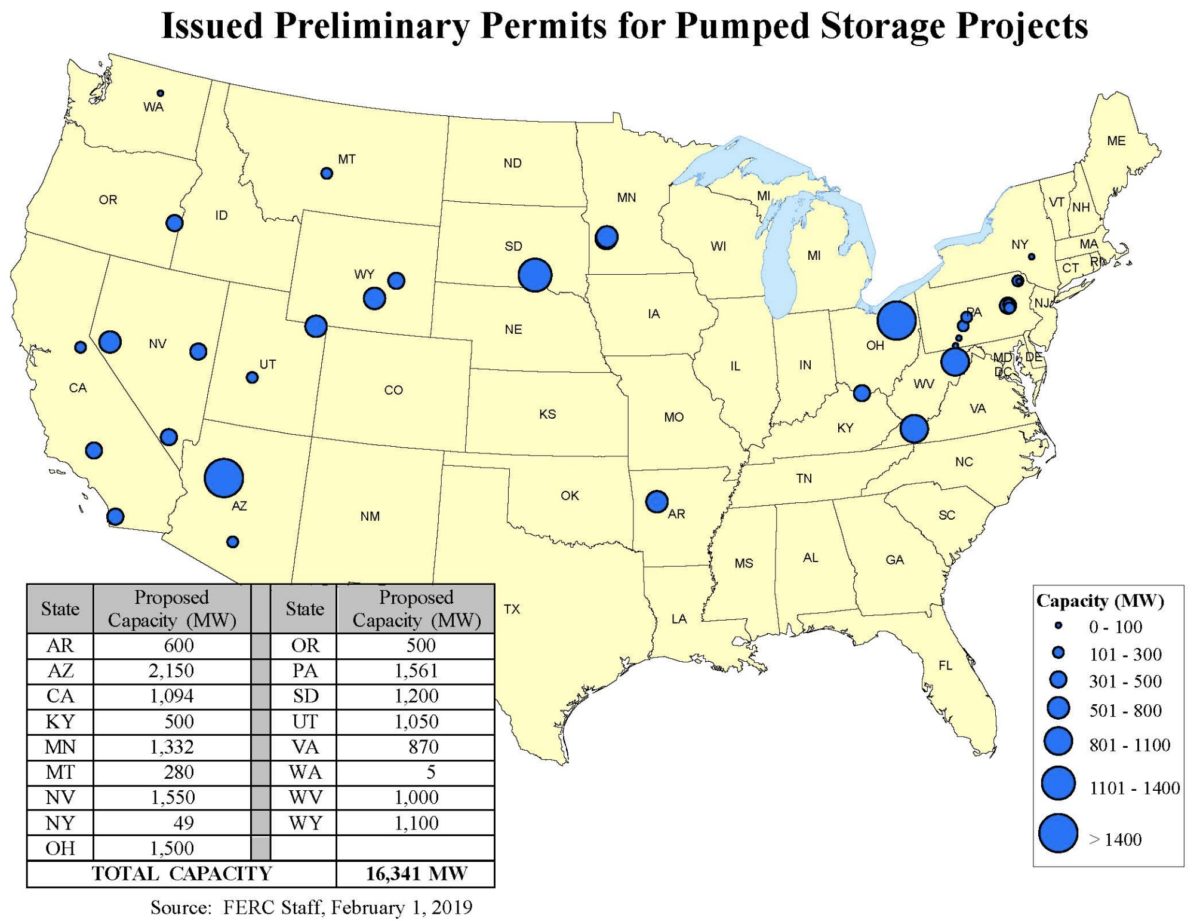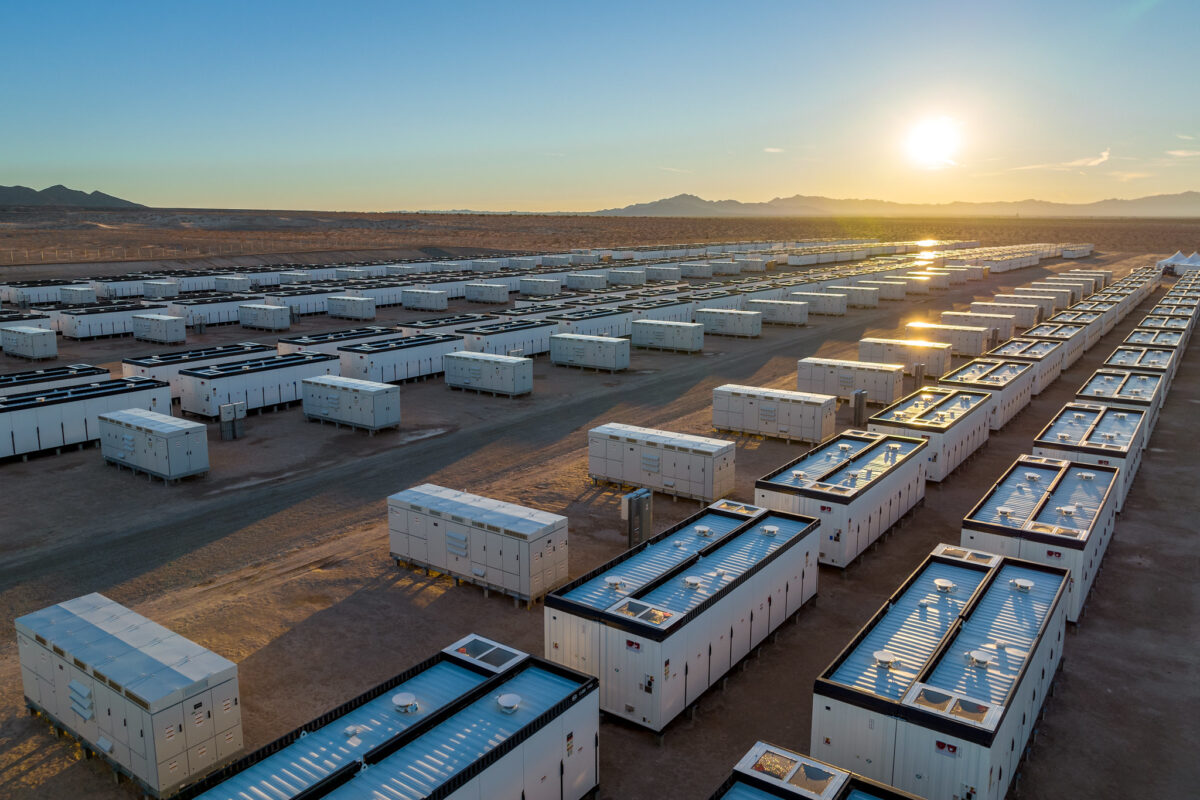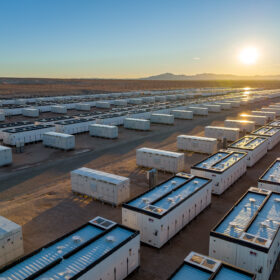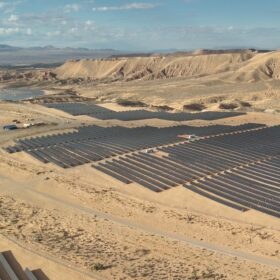Earth has an estimated 500,000 suitable sites for closed-loop pumped hydro storage, which can pair well with solar power.
In the United States, 24 pumped hydro storage units are in operation, totaling 18.4 GW of capacity. Most were authorized more than 30 years ago—attesting to the longevity of the technology—as reported by the Federal Energy Regulatory Commission (FERC).
The largest new project proposed in the United States would create 2 GW of closed-loop pumped hydro storage in Arizona. Project owner Big Chino Valley Pumped Storage LLC, which holds a preliminary permit from FERC, is owned by ITC Holdings Corp., the largest independent electricity transmission company in the U.S.—which is itself a division of Fortis. The project has a website.
A project report and update describe a 2,000 MW closed-loop pumped storage hydro facility, with two water reservoirs covering 420 acres, one powerhouse with reversible hydropower turbines, and a daily operational schedule of 10 hours generating and 12 -14 hours pumping. FERC considers a hydro system to be closed-loop if it is not continuously connected to a river.
While the project is not paired with solar power, its arid location and the attractive cost of solar generation in such regions make pairing with solar likely.
The proposed project would be located five miles southeast of Seligman, Arizona, and ITC Holdings is conducting ongoing feasibility and environmental studies. A project timeline shows that a final FERC decision is expected by early 2021; the preliminary permit’s expiration date is November 30, 2020. If approved by FERC, ITC Holdings projects a commercial online date of 2025-2028.
ITC Holdings is considering three potential transmission interconnections:
- A 500 kV tie to the Western Area Power Administration at a future Peacock Substation in Mohave County, Arizona
- A 500 kV tie to Southern California Edison at the Eldorado Substation in Clark County, Nevada
- A 500 kV tie to Arizona Public Service at the Yavapai Substation in Yavapai County, Arizona.
At times of low electricity demand or high renewable generation, electricity could be used to pump water from the lower to the upper reservoir using reversible turbines. At times of high electricity demand or low renewable generation, water could flow from the upper to the lower reservoir, through the turbines, to generate electricity.
Stakeholder comments on the proposed project have been summarized by ITC Holdings.
FERC says it has recently seen an increase in the number of preliminary permit and license applications filed for pumped storage projects, and has issued licenses for several new projects in recent years.
Editorial note: Thanks to Hans Hyde for this story tip.
This content is protected by copyright and may not be reused. If you want to cooperate with us and would like to reuse some of our content, please contact: editors@pv-magazine.com.








The most innovative pumped storage concept i have seen is to use abandoned mines for pumped storage. Many are already flooded at lower levels, and no acreage has to be set aside for reservoirs.
This would make a good article!
Don’t you still need to build a big pond at the top of the mine? Or how do you arrange your top of the hill storage? The pressure head would vary too much if you use the top half of the mine for uphill storage and the bottom half of the mine for a down hill storage.
I was thinking the same thing. No need for geographical elevation differences between the lower and upper stations.
Every underground coal mine I’ve seen had a settling pond at the top.
Add floating solar on top of the reservoir to help minimize evaporation.
Disappointed to see there is nothing Colorado. But, I guess we don’t have enough RE yet to warrant it – just under 20% currently.
John is right evaporation is the biggest enemy of this project because rainfall is not guaranteed in AZ for months at a time you will have a dwindling reservoir to work with. Even with coving the reservoir this will likely be an issue at longer time scales. Very ambitious
I would think that a floating PV field with some sort of sealing between the panels would reduce evaporation drastically. Further not so much heat gets through the PV panels and if the floating base is painted white (or whatever coating is best) Ideal set up to use bifacials. Does anyone have any idea of evaporation loss from a pond in the desert? It might not take a large fraction of the energy to pump top up water from a distant river. Of course you have to convince the current users of that river that the pumped hydro is more important than whatever they now use the water for.
Of course there’s a lot of sun energy in Arizona.but I think the better plan is to couple pumped storage with wind which blows night and day. Future pumped storage storage projects should consider wind, water and elevation. Ideal locations should be found along the Columbia River and evaporation will not be a significant problem.
Watch out for using groundwater to replenish evaporation. The quad cities may have water issues due to this project – groundwater elevations may lower.
This was a fun challenge for us – our team did the up-front conceptual development and engineering and secured the initial FERC permit. Unfortunately ITC decided not to continue the development and the web site is down.
The storage capacity as originally conceived was 20 GWh. That was enough to significantly impact the California “Duck Curve.”
The losses to evaporation and seepage were estimated at less than 10% per year which is a tiny fraction of 1% of the available aquifer annual recharge.
One of the biggest challenges was and continues to be water rights. We collectively need to recognize there is no such thing as an energy free lunch. Everything has an impact, whether it is a wind turbine, concentrating solar-thermal, or pumped hydro. If the western US needs lots of energy storage without much environmental or social impact, pumped hydro is a nearly perfect technology.